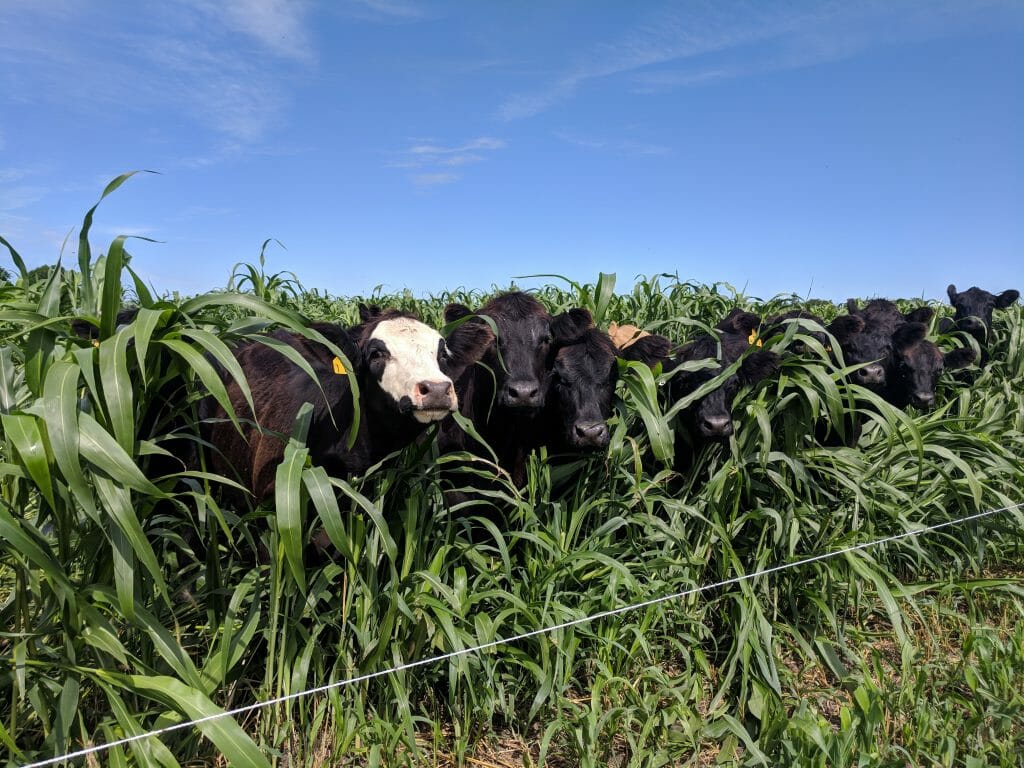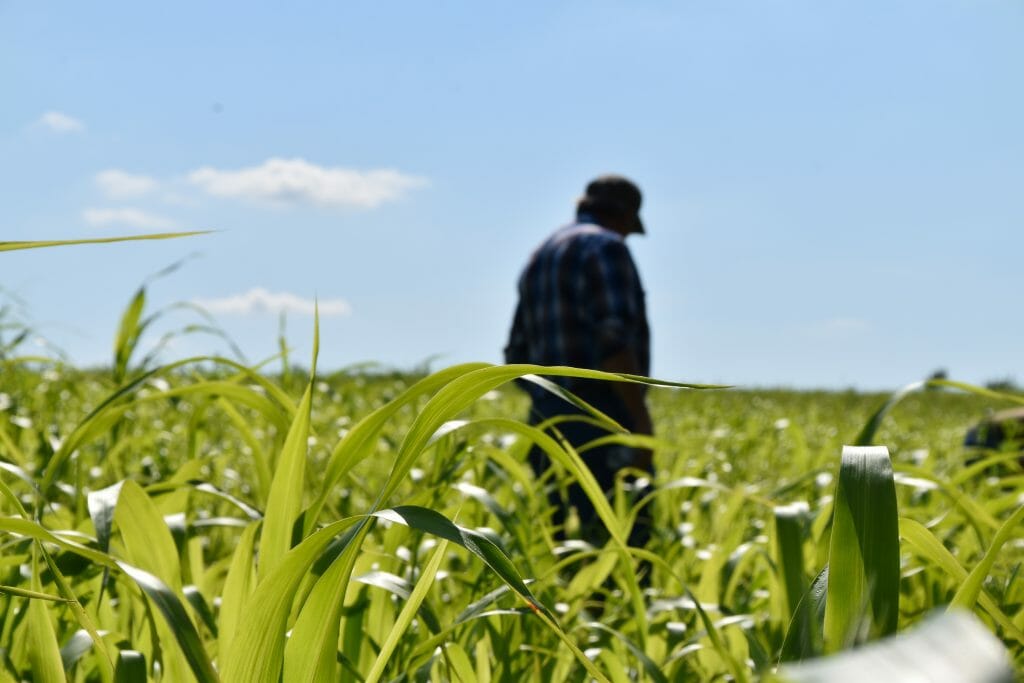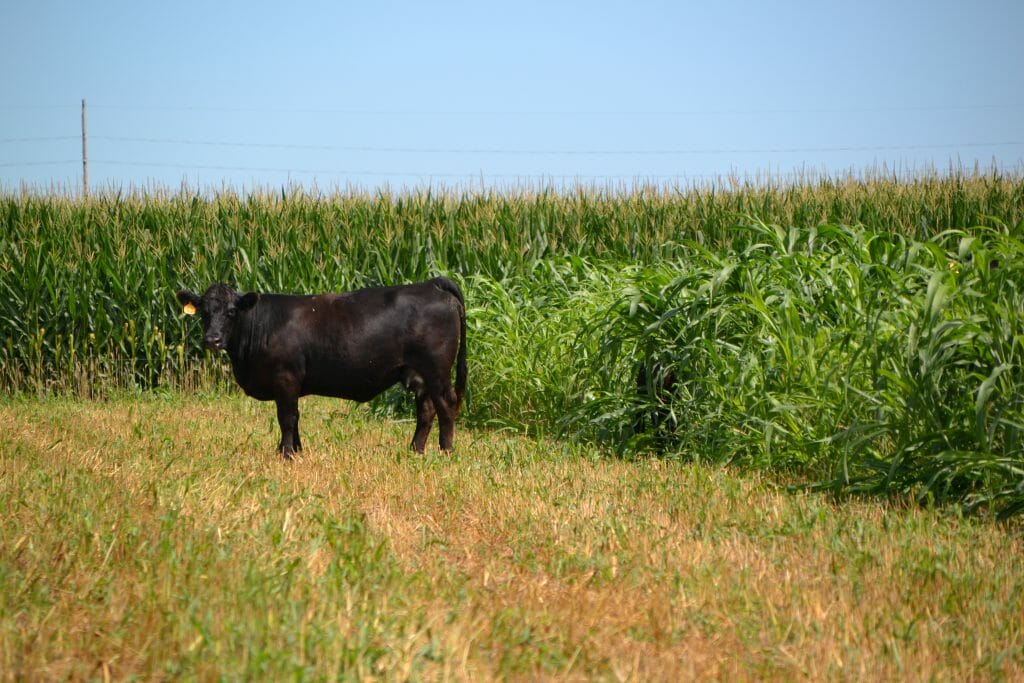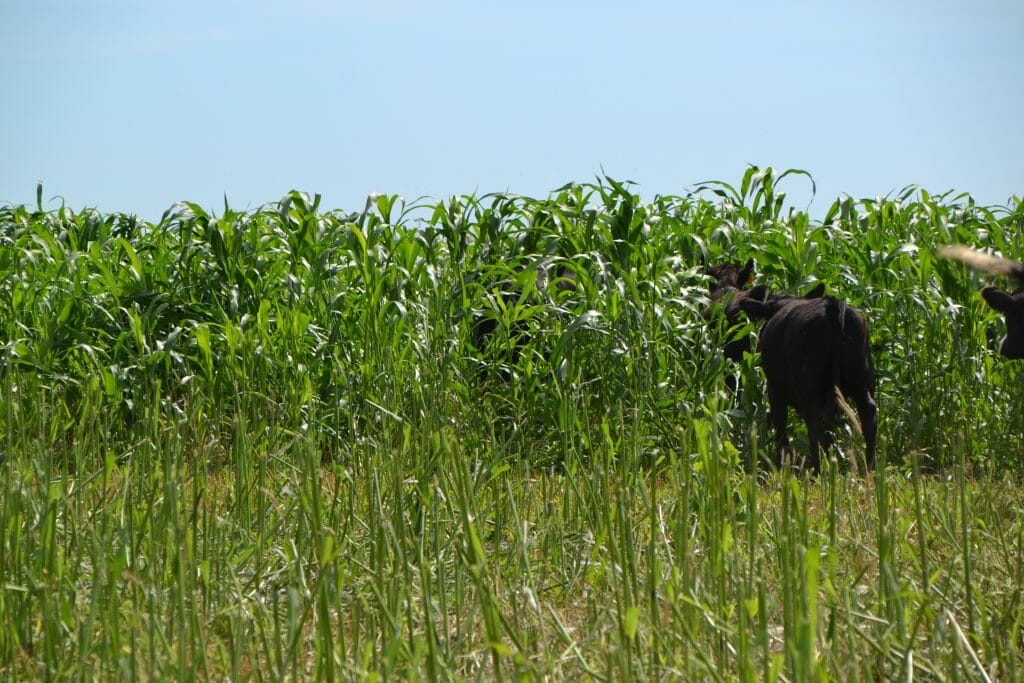Maximizing Forage Production with Summer Annuals in an Extended Rotation
Increasingly erratic weather events are making long-lived plantings of alfalfa trickier to establish and manage successfully for cattle and dairy forage. But more and more corn silage hardly seems like a sustainable solution because it leaves the ground bare for so many months of the year. “What really intrigues me is thinking outside of the box of alfalfa and corn,” Daniel Olson says. Daniel is a seventh generation dairy farmer and forage consultant of Forage Innovations who has been increasingly working with all kinds of warm season annuals like sorghum sudan, millet and teff in combination with cool season annuals and small-grain crops to keep the ground covered year round and produce a reliable stream of forage for both his own and his clients’ cattle. “Small grains provide great opportunities to build soil health and grow some amazing forage at the same time,” Daniel says.
The first step is to answer two key questions:
- What your goals for feed quality? What animal groups will you be feeding it to?
- What harvest method are you going to use? Grazing? Baling? Haylage? Ensiling?
“Too often when we get into these annuals we end up with a huge mess of feed that’s impossible to harvest – you’re trying to dry something that is never going to dry down – or the quality profile doesn’t fit what you’re trying to do,” Daniel says. “If you’re going to try to keep finished cattle at weight you’d want a different nutritional profile than feeder cattle.” With these two parameters in mind you can then sort through some species options and consider what fits best with your goals.

Warm Season Annuals
These crops are ideally planted in the window of about June 1 – August 1 if your goal is forage production. This works well in crop rotations with small grains that are harvested for forage themselves in late May or early June or in July if the small-grain crop is grown to maturity for grain. Either crop rotation provides an appropriate window in most years to establish a heat-loving summer annual crop.

Warm season annuals are primarily grasses:
Forage sorghum is a big plant. “Think of it in the same category as corn,” Daniel says. You’ll plant it in 15 or 20 inch rows anywhere between May and July, increasing the seeding rate as you get later into that window. The best way to harvest it is chopping as it’s extreme height and tough stems can make it less palatable for grazing. Because sorghum is a grain crop, if you are planting it before August 1 and planning a single forage harvest in the fall you will want to invest in a photoperiod sensitive variety. This trait will keep the sorghum for going reproductive until the photoperiod is less than 12 hours and 20 minutes per day to maintain forage quality until that fall harvest window.
Sudan grass doesn’t have the sheer tonnage of sorghum reaching only 60-80% of the yield. But, it is available with brown midrib (BMR) capabilities which are better for animals you’re trying to gain or grow as they contain more digestible energy in the stalks and leaves. Sudan grasses are best grazed or harvested as haylage.
Sorghum sudan grass is Daniel’s go-to hybrid between the previous two grass crops. It too can come with BMR capabilities and with variable ratios of cross (20-80 or 94-6) you can maximize yield to the level that it doesn’t compromise quality for the livestock you’re feeding it to. The same photoperiod traits and considerations apply to hybridized sorghum as forage sorghum (see above). Sorghum sudan varieties graze well and can be taken for haylage. It is a higher fiber crop so it’s less desirable for young animals.
All of the sorghum, sudan and hybridized varieties have a unique phenomenon of creating prussic acid after the first frost in the fall. This is of critical importance when using the crop for forage as the acid can be toxic and kill cows if it’s grazed or harvested one to two weeks after the first frost. “If you’re going to graze stockers in mid-october and you don’t want to have to watch for frost every night, steer clear of sorghum and sudan grasses,” Daniel says.

Millet, according to Daniel, is “extremely soft and leafy with good palatability and utilization.” Millets (several varieties include German, Pearl, Japanese – Daniel’s favorite is Japanese Pearl Millet) can also be ordered with BMR to increase forage quality. It’s still a pretty wet plant, so grazing or haylage are best harvest options.
Teff is an Ethiopian grain. “It’s the only summer annual you can get consistent dry hay out of,” Daniel says. So if your equipment and fencing are limiting your forage harvest options teff might be one to consider, even though the overall tonnage is less than any of the other summer annual options listed.
Why stop with just one? You could also consider mixing and matching multiple of these summer annual species. “We have hundreds of plots on our farm where we do research,” Daniel says. “Through diversification we get a yield bump, there’s a kind of synergistic effect by combining different species or varieties. Some of Daniels favorites are to mix BMR forage sorghum or millet with BMR sorghum sudan. With the sorghum-sorghum sudan mix there is a huge amount of forage while the varied plant heights of the millet (denser and lower to the ground) and sorghum sudan (taller) compliment well in the field and can help control weeds that creep in with sorghum sudan that is planted in such wide rows.
Adding some of the other common summer cover crop mix species like sunflowers, sunhemp, cowpeas or soybeans into the mix, while great for achieving diversity and some soil health goals are usually not a great option for forage quality. If you stick to just the warm season annuals some benchmark yield ideas are 3.5-4 tons of dry matter for a single cut or photoperiod sensitive sorghum and for multi-cutting approaches 2 tons in the first cut and 1.5-2 tons in the second cut.

Cool Season (Mostly) Annuals
If you do need to do some field work or end up with a late small grain harvest and are looking at a planting window for your forage crop after about August 20, that’s when you might seriously consider switching from these warm season options to a cool season forage. “One thing I’ve had good success with is planting winter small grains, spring small grains, brassicas and legumes – mixing triticale, winter wheat, rye and forage oats, peas or clover, turnips, radishes or rapeseed,” Daniel says. “Those will make tremendous quality forage for the fall and then as long as you don’t graze it down too much the rye, clover and rapeseed will come back in the spring. You are doubling up a winter cover crop and a forage option all at the same time.”
Small grains shared learning calls are held the first Friday of the month – to get announcements for upcoming call topics and learn how to join subscribe to our small grains newsletter.
